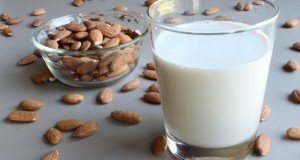Vitamin C deficiency discovered in critically ill patients, researchers reveal
(Naturalhealth365) Sepsis, a systemic, body-wide complication of infection, features a grim mortality rate – particularly if it progresses to septic shock. Accounting for roughly one out of three hospital deaths, septic shock is fatal 30 to 50 percent of the time (conservatively speaking) – and claims roughly 250,000 lives a year in the United States. But, one way – gaining popularity – to avoid becoming a ‘death statistic’ is to rely on vitamin C, as soon as possible.
Natural health experts have long insisted that illnesses, such as sepsis, drastically deplete the body’s stores of vitamin C, an indispensable nutrient which can only be obtained through diet or supplementation. Now, a recent study from New Zealand reveals the devastating extent to which critical illnesses rob the body of vitamin C – even when patients are being given the amounts recommended by the conventionally-trained health experts.
Scientists report: “Recommended” amounts of vitamin C are insufficient for critically ill patients
In a study published in BMC, researchers evaluated plasma vitamin C levels in patients in the Intensive Care Unit of Christchurch Hospital in New Zealand. All of the patients were critically ill, and suffered from either sepsis or severe cardiac problems.
The team wanted to assess how levels of vitamin C varied depending on infection status – and to determine if normal ICU nutritional support was adequate to meet the vitamin C needs of critically ill patients.
What they found was alarming…
Despite an average daily intake of 125 mg of vitamin C a day – and 200 mg in the case of patients receiving nourishment through IV – the patients had low concentrations of vitamin C. In fact, the researchers found that actual levels of vitamin C levels in the blood were only a third of what one would expect, given the amount of supplementation.
Since a shortfall of vitamin C can compromise the recovery – and even survival – of the critically ill, this was a disturbing finding.
Lower vitamin C status – and more severe inflammation – found in septic shock patients
On the whole, 68 percent of the critically ill patients had low vitamin C status, or hypovitaminosis – defined as less than 23 micromoles per liter. And – with under 11 micromoles per liter – 32 percent were characterized as vitamin C deficient.
The team found that vitamin C levels were significantly lower in septic shock patients than non-septic patients. Nearly 40 percent of the septic shock patients had low levels of vitamin C, compared with 25 percent of the non-septic patients.
The patients suffering from sepsis also had higher levels of inflammation than non-septic patients – showing more than double the amount of C-reactive protein, an inflammatory marker. Higher levels of C-reactive protein are associated with a higher incidence of organ failure and death.
The researchers reported that vitamin C deficiencies were much more prevalent than would have been found in a community cohort of participants who were not critically ill. In fact, the team pointed out that an “average” cohort would have featured less than 13 percent hypovitaminosis and 2.4 percent vitamin C deficiency.
The team noted that the low levels of vitamin C likely resulted from increased metabolism due to enhanced inflammatory response – confirming the body’s increased demand for vitamin C when infection is present. (High-dose vitamin C advocates have been saying this for years).
The team concluded that over 2,000 mg of vitamin C a day may be required to normalize plasma levels in seriously ill patients – and that 3,000 mg a day may be necessary in order to raise the nutrient to saturating levels. In other words, up to 2 to 3 grams a day are needed – 20 to 30 times more than the dosage the patients were given.
Vitamin C pioneers call for lifesaving sepsis protocol
It’s hardly surprising that low levels of vitamin C can impair the body’s ability to combat illness, injury and infection. As the researchers pointed out, vitamin C is a “potent antioxidant” with “anti-inflammatory and immune-supportive” roles. It functions as an enzyme co-factor that helps to generate metabolic energy, while protecting proteins, fats and DNA from oxidation and preventing harm to tissues and cells.
Thomas E. Levy, MD, JD, a board-certified cardiologist and high-dose vitamin C advocate, maintains that vitamin C can alleviate conditions that remain unresponsive to modern medicine – and he cites the work of Dr. Paul Marik.
Dr. Marik has been using a combination of hydrocortisone, thiamine and high-dose intravenous vitamin C to treat advanced sepsis and septic shock at the Eastern Virginia Medical School in Norfolk – with astonishing results.
Dr. Marik reports that a retrospective study showed that only 8.5 percent of the patients in a group treated with vitamin C died – as compared to 40.4 percent of the control group. Yet it seems these astounding results have been ignored by conventionally-trained physicians.
Saying that the vitamin C protocol is inexpensive, effective and nontoxic, proponents are urgently calling for it to be administered for sepsis – not as a replacement, but as a complement to existing therapies.
There is simply no reason, they say, for this potentially lifesaving natural treatment to be ignored, downplayed or suppressed any longer – especially when lives are at stake.
Sources for this article include:











